Sacramento is still bruised from Gig Car’s departure. Could EV car-sharing ever come back?
Climate change is global but the actions we take here in Sacramento play a role in shaping our environmental future. The Sacramento Bee is undertaking a collaboration with you to examine and celebrate bold and ambitious climate actions that have yielded evidence that they’re making progress here and elsewhere. The goal is to engage you and your neighbors in a hopeful discussion about how we can face climate change with urgency and equity.
David Kaldor began using shared Chevy Bolts during a rough patch. Kaldor, a 31-year-old Sacramento State student, lost his vehicle in a crash. The Gig Cars offered him needed independence. He could run important errands and even take his new girlfriend on a date.
Kaldor was disappointed by the company’s decision to leave Sacramento early last year. He felt he was losing his transportation safety net.
To express his desire to see Gig return someday, he gave the company a call.
“I just said, ‘Hey, thank you so much,’” Kaldor recalled telling a Gig representative. “’This was a very helpful service for me and probably a lot of other people. I hope you guys make a profit in the areas you’re still operating and come back.’”
Gig, which is still running in the San Francisco Bay Area and Seattle, was deployed to Sacramento in 2019 by Volkswagen to make amends for the scandal known as Dieselgate, when the company cheated to pass vehicle emissions testing. Now $44 million and four years later, the cars are gone and the city is back to square one.
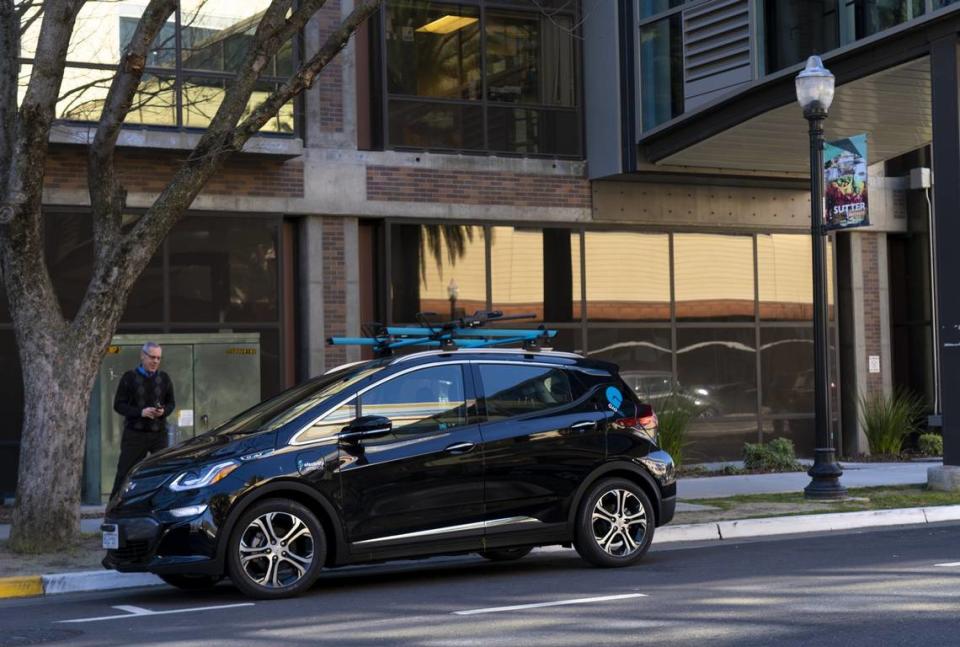
Gig left last February, but city officials are still recuperating from the sting of its loss. They say the city ultimately became a testing ground for a project that, when the subsidies dried up, left people without basic services they came to rely on.
Now local governments, car-sharing companies and nonprofit organizations are raising a key question: Can car-sharing services in a city like Sacramento — and more rural parts of the Central Valley — be sustainable long term?
What happened to Gig in Sacramento?
Vehicle sharing has been hailed as a key climate solution to reduce planet-warming pollution for years. Gas-powered cars account for roughly 80% of carbon emissions in the U.S. transportation sector. In California, cars and trucks make up 38% of all emissions.
In 2017, the Air Resources Board designated Sacramento as a Green City, that would receive $44 million from Electrify America, a subsidiary of Volkswagen. It was created to spend $2 billion in settlement money across the nation to promote EVs following the VW diesel emissions scandal.
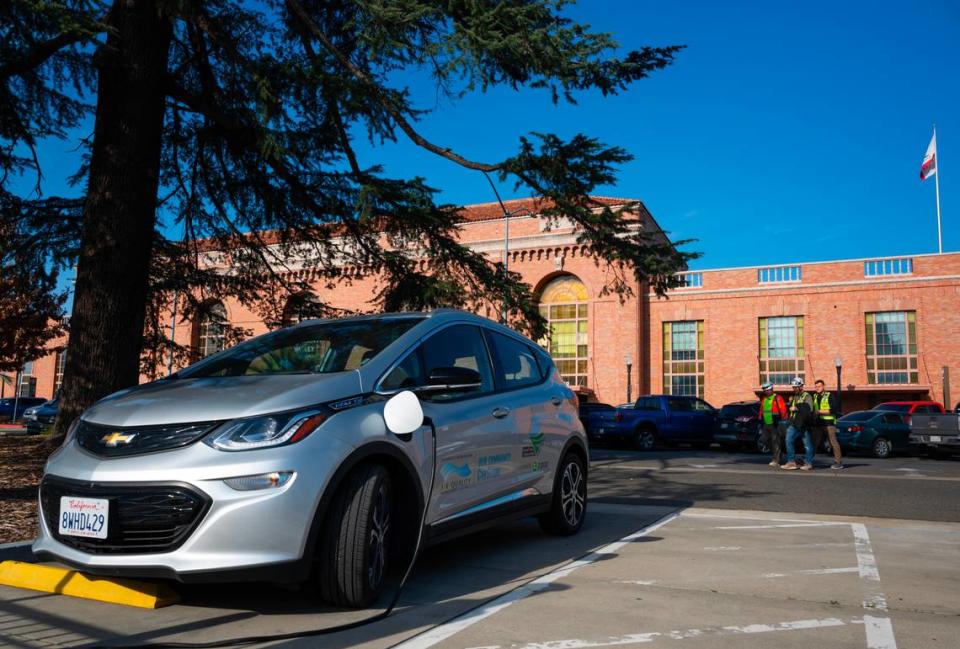
Electrify America hired Gig Car Share, whose parent company is roadside assistance giant American Automobile Association (AAA), to operate a fleet of 260 shared EVs in Sacramento, considered the largest of its kind in the country.
When it launched in May 2019, Gig was celebrated as a way to expand EV access beyond California’s wealthiest households in Sacramento. For a while, it did. The program was convenient, affordable and relatively easy to use.
Gig offered one-way point-to-point rentals, letting users pick up a car in one place and drop it off anywhere within Sacramento. They were responsible for charging the dozens of cars, which were mostly Chevy Bolts.
All drivers had to do was download an app, find a car and pay $2.50 for the first five minutes plus 40 cents an additional minute. The City of Sacramento did not sign a contract with Gig or Electrify America, but simply granted the cars special parking permits.
After three years of Gig cars zipping around the Sacramento area, the company announced it would leave in February 2023, offering few specifics beyond high operating costs and low demand.
John Treanor, a spokesperson for AAA, said Gig operated at a loss since its Sacramento launch in 2019 and was “unable to expand market usage to the level needed to sustain the business,” he added in a written statement.
Electrify America spokesperson Tara Geiger said in a statement that Gig attempted to stay beyond its three-year contract by expanding service beyond the downtown core and introducing multi-day rentals.
Both companies did not respond to requests for an interview or detailed questions about Gig’s operating budget.
Fedolia “Sparky” Harris, principal planner for the Sacramento Department of Public works, said he was “caught off guard” by Gig’s decision to leave. They were under the impression the company was working to stick around.
“I asked what we could do to keep the program and was hoping to start a conversation to talk about solutions, but that didn’t happen,” Harris said.
Local officials were perhaps most vexed by the cars. Under the contract, Gig owned them outright and simply moved them to San Francisco or Seattle.
“The cars disappeared and there was no recourse,” said Raef Porter, program manager for the Sacramento Metropolitan Air Quality Management District. “The fact that we had no leverage to keep them here longer than they wanted to is a downside. We’re all still smarting from that.”
Speaking to state regulators at the Air Resources Board in August, Sacramento’s climate action lead Jennifer Venema called Gig’s departure “a shame” that will set the city back on EV access and car-sharing.
“Gig was a hugely successful program and it’s a big loss for us that it’s gone,” she told the board, which oversees the Electrify America settlement. “The harder, long-term issue is to ensure these types of investments are sustainable for disadvantaged communities so they’re not just test beds for services to come and go.”
Sacramento is not the first case of a car-share company abruptly removing cars from a California community that needs it. Cantua Creek, a small community north of Fresno whose residents primarily work in the fields, were given shared Teslas through a state grant only for them to disappear months later.
Now, air district officials are planning to expand an existing car-share program, Our Community Carshare. It is focused on disadvantaged communities and operates on a vastly smaller scale. It’s run by ZipCar, a company that oversees a small fleet of commercial car-sharing in Sacramento that has worked with local agencies since 2017.
Currently, 16 total cars are shared from 10 locations mostly near community and low-income housing developments — including in South Sacramento and Del Paso Heights. The regional air quality district said that by spring, it hopes to add at least one other car to a new charging/pick up site at Colonial Heights Library.
Is nonprofit the answer?
Companies like Gig appear to be finding more success in higher-income urban areas with transit. Elsewhere, subsidized programs often disappear when the money runs out, leaving the people most in need of transportation in the lurch and without core services.
Yet a handful of nonprofit programs in the Central Valley are successfully expanding EV access and offering car-sharing opportunities in lower-income communities with a goal to stay the course long term.
Green Raiteros in Huron has been sustainably offering rides for its members since 2018. And Míocar, a membership-based car-sharing service, operates close to 50 vehicles in Stockton, Richmond and Tulare/Kern counties.
Elizabeth Owens, 51, started using EV car-sharing as a way to reach far-off doctors appointments in Modesto. Unemployed due to a disability, she’s raising her son and two young grandchildren in low-income housing in South Stockton.
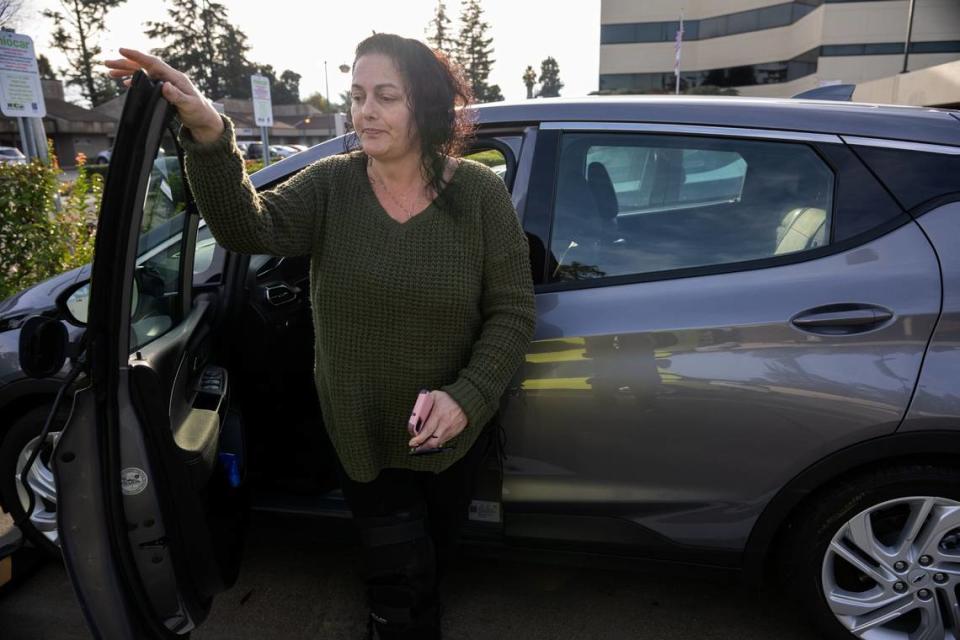
Now she uses a Míocar Chevy Bolt at least once a week for errands and trips with the kids. Without these cars, Owens said basic errands would be more stressful.
“I’d have to get a ride or take my own car, which I prefer not to do. My car has issues and breaks down a lot,” she said at a car pickup station on Grand Canal Boulevard in December. “It’s a treat for the kids because it’s a brand new car. They always want to use it.”
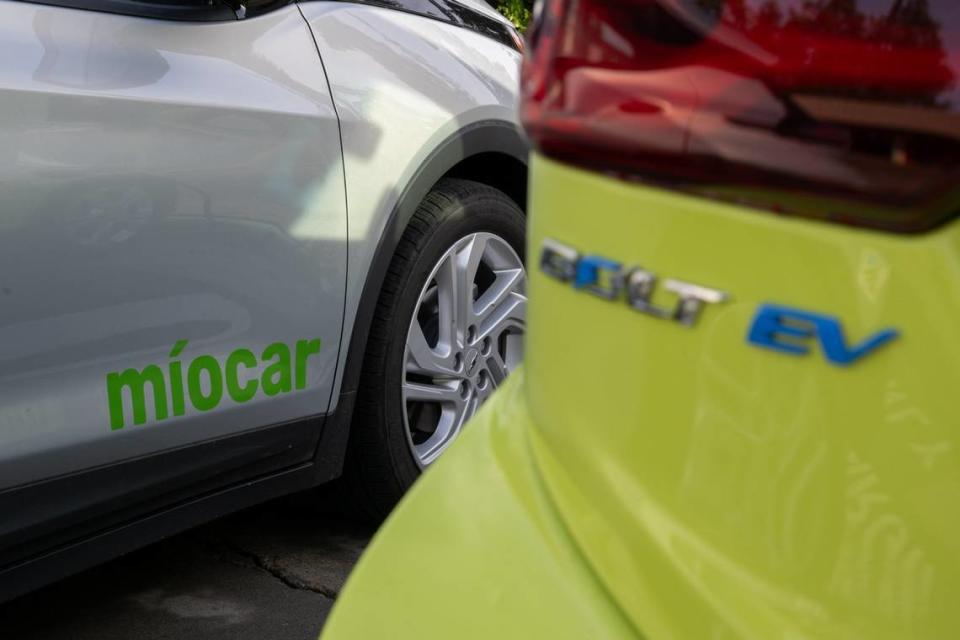
The cars run on a point-to-point system, meaning cars are picked up and dropped off at designated locations — at $4 an hour or $35 for the day. And now Míocar is expanding, planning to add another 30 cars this year. Staff say 90% of its members live in low-income households.
Gloria Huerta, the organization’s chief operating officer, said Míocar does not have concrete plans to come to Sacramento but is certainly open to expanding to the city if city agencies or community organizations are looking for a new partner.
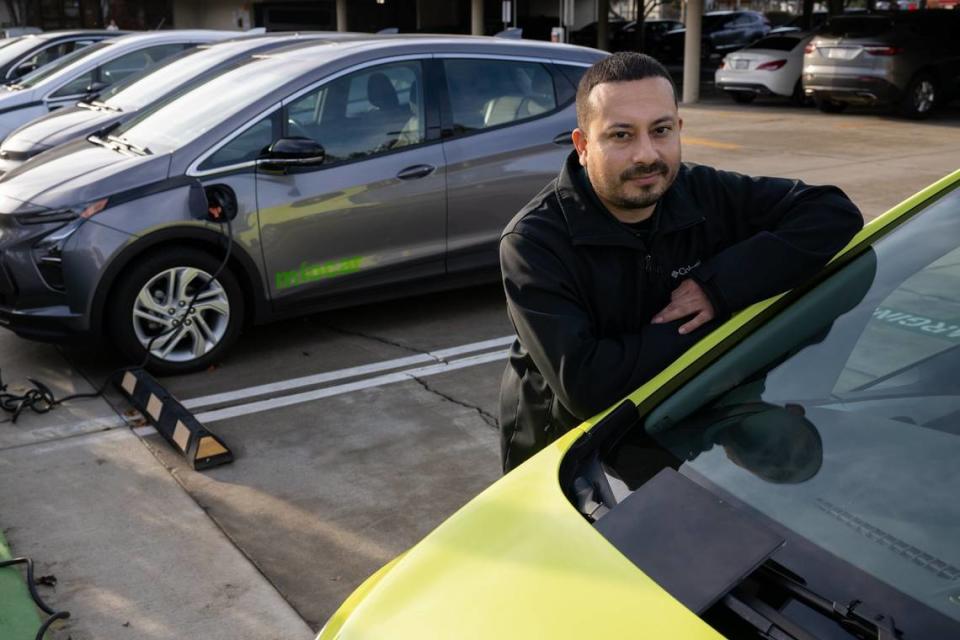
Caroline Rodier, associate director of the Transportation Center at UC Davis, authored a study on more than a dozen car-sharing programs across the U.S. since the early 2000s. She said nonprofits or publicly-run programs serve low-income or marginalized populations more effectively.
“We have these for-profit car-sharing services that aren’t interested in under-served areas. But Míocar, for example, doesn’t have the pressures of a for-profit business,” Rodier said. “They’re subsidized by grants and constantly looking long term.”
But Rachel Heckl, director of strategic expansion at Míocar, said that doesn’t mean longterm finances are simple. The organization is currently funded primarily by the state resources board, but Heckl said the team is exploring future revenue opportunities.
One option the organization exploring is partnerships with outside companies, such as healthcare providers, to offer bulk memberships for workers or patients. They have been consulting on that model other nonprofit car-share operators serving drivers whose transportation needs have historically gone unaddressed.
“These are the things we’re asking right now and we should absolutely be thinking about it,” Heckl said. “Because we won’t be able to be subsidized forever.”
This story is made possible, in part, with support from the Solutions Journalism Network.

